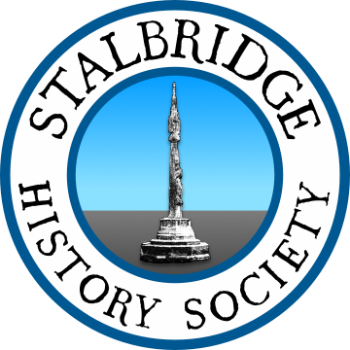
A lecture at Dorset Museum & Art Gallery will explore a fascinating group of objects discovered in Dorset and now on display at the British Museum.
“Traditions and Transitions: The Story of the Chettle Grave Group“ will take place at Dorset Museum & Art Gallery on Thursday, 18th April at 7pm. The talk will be given by Sophia Adams, a curator at the British Museum responsible for collections from the first millennium BC in Europe and the Roman conquest of Britain.
The Chettle Grave group was discovered in Chettle Park, North Dorset, in 2003. The group comprises a locally made bronze mirror and strainer bowl, an imported bright blue glass jar, and several Roman vessels that were buried in the late 1st or early 2nd century AD. The objects had been carefully arranged in a cluster with the shallow dishes set up on their edges resting against the strainer bowl. Beside these was a large, round-bodied glass bottle of a type usually found with cremated remains of a person.
The Iron Age mirror was the oldest item buried in the grave, probably older than the deceased person. The complex design on the mirror is similar to that of the Portesham Mirror displayed at Dorset Museum & Art Gallery.
The strainer bowl is particularly exciting because only a handful are known and are rarely complete. The only example known outside southern England was found in Poland.
The two glass vessels are among the newest objects in the grave and set the earliest possible date for burial to more than 25 years after Roman conquest – possibly as early as 70 AD or as late as 125 AD.
So what stories do these objects have to tell? Why were they buried together?
Following conservation work, this group of objects is now displayed in the Britain and Europe gallery at The British Museum. During her lecture, Sophia Adams will guide attendees through a close-up look at these fascinating finds. Each item alone is intriguing but crucially tells how they came to be buried together near the end of the first century or early second century AD.
Tickets for this lecture can be booked online at www.dorsetmuseum.org/event/
Sophia Adams
Sophia Adams is a curator at the British Museum responsible for collections from the first millennium BCE in Europe and the Roman conquest of Britain. She holds a bachelor’s and a master’s degree in archaeology from University College London and was awarded a PhD from the University of Leicester for her research on Iron Age brooches. Her career has seen her working in development-led fieldwork, undertaking research fellowships and getting up close to some rather special ancient finds. She is currently obsessed with chronology, technology, materials and making.
Dorset Museum & Art Gallery
Dorset Museum & Art Gallery is the only museum in Dorset that tells the story of the county in its entirety, showing the relationship between the land and its inhabitants, and how this relationship inspired ingenuity, exploration, and creativity. Covering 250 million years of history, their collections are of international significance and demonstrate the breadth of the Dorset story and its relevance to all.
The Museum boasts four permanent galleries and typically offers three major temporary exhibitions a year in their designated Special Exhibitions gallery.
For more information about exhibitions and events at Dorset Museum & Art Gallery, visit dorsetmuseum.org.


